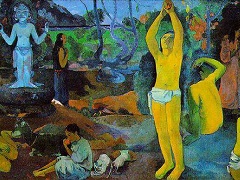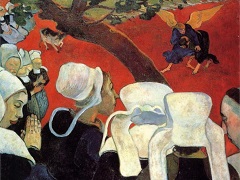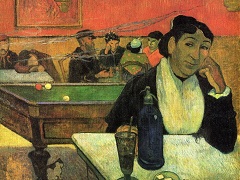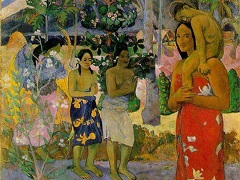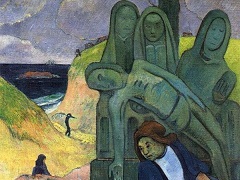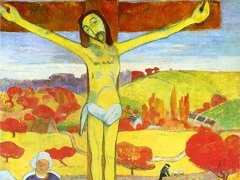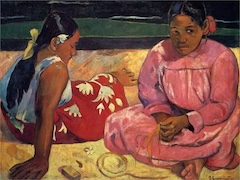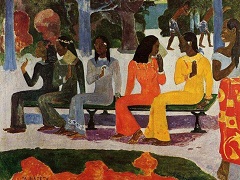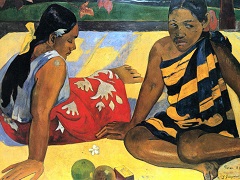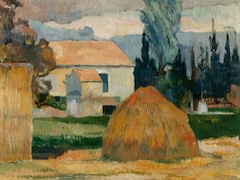Two Tahitian Women, 1899 by Paul Gauguin

Two Tahitian Women is an 1899 painting by Paul Gauguin. It depicts two topless women, one holding mango blossoms, on the Pacific Island of Tahiti.
Although Tahiti is depicted as an innocent paradise, the two women in the painting confront the viewer in a way similar to that in The Luncheon on the Grass (1863) or Olympia (1863) of Edouard Manet, and follow an artistic tradition of comparing woman's breasts to flowers or fruit.
As Gauguin brought his work in Tahiti to a close, he focused increasingly on the beauty and serene virtues of the native women. In this painting, he depended on sculpturally modeled forms, gesture, and facial expression to vivify the sentiments he had used to describe the "Tahitian Eve": "very subtle, very knowing in her naivete" and at the same time "still capable of walking around naked without shame."

